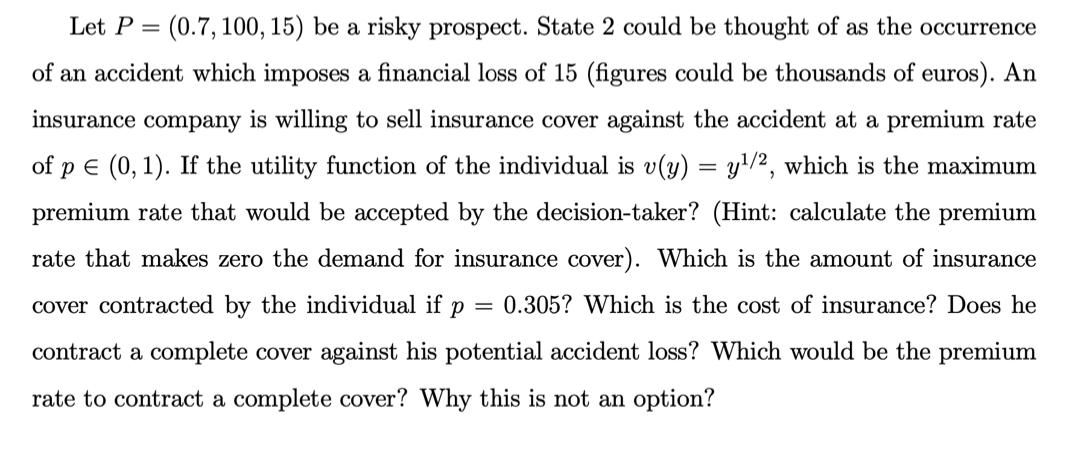Answered step by step
Verified Expert Solution
Question
1 Approved Answer
Let P = (0.7, 100, 15) be a risky prospect. State 2 could be thought of as the occurrence of an accident which imposes

Let P = (0.7, 100, 15) be a risky prospect. State 2 could be thought of as the occurrence of an accident which imposes a financial loss of 15 (figures could be thousands of euros). An insurance company is willing to sell insurance cover against the accident at a premium rate of p (0, 1). If the utility function of the individual is v(y) = y/2, which is the maximum premium rate that would be accepted by the decision-taker? (Hint: calculate the premium rate that makes zero the demand for insurance cover). Which is the amount of insurance cover contracted by the individual if p = 0.305? Which is the cost of insurance? Does he contract a complete cover against his potential accident loss? Which would be the premium rate to contract a complete cover? Why this is not an option? Let P = (0.7, 100, 15) be a risky prospect. State 2 could be thought of as the occurrence of an accident which imposes a financial loss of 15 (figures could be thousands of euros). An insurance company is willing to sell insurance cover against the accident at a premium rate of p (0, 1). If the utility function of the individual is v(y) = y/2, which is the maximum premium rate that would be accepted by the decision-taker? (Hint: calculate the premium rate that makes zero the demand for insurance cover). Which is the amount of insurance cover contracted by the individual if p = 0.305? Which is the cost of insurance? Does he contract a complete cover against his potential accident loss? Which would be the premium rate to contract a complete cover? Why this is not an option?
Step by Step Solution
There are 3 Steps involved in it
Step: 1
The individual will purchase insurance if the expected utility with insurance denoted as Uinsurance ...
Get Instant Access to Expert-Tailored Solutions
See step-by-step solutions with expert insights and AI powered tools for academic success
Step: 2

Step: 3

Ace Your Homework with AI
Get the answers you need in no time with our AI-driven, step-by-step assistance
Get Started


